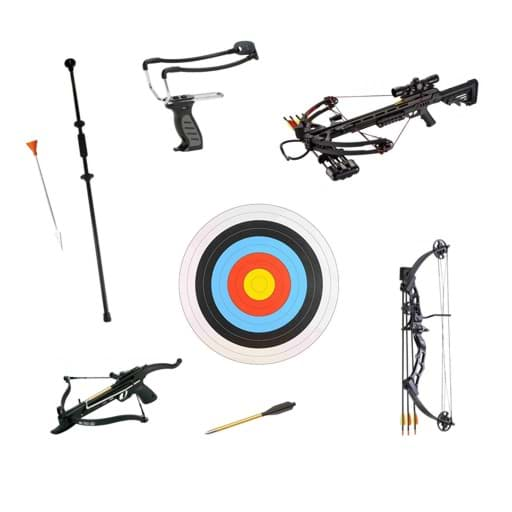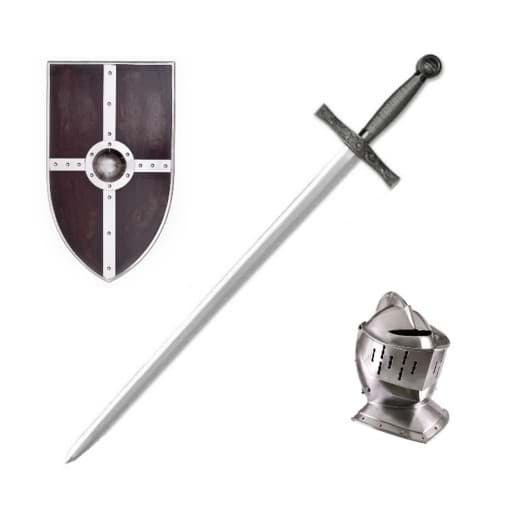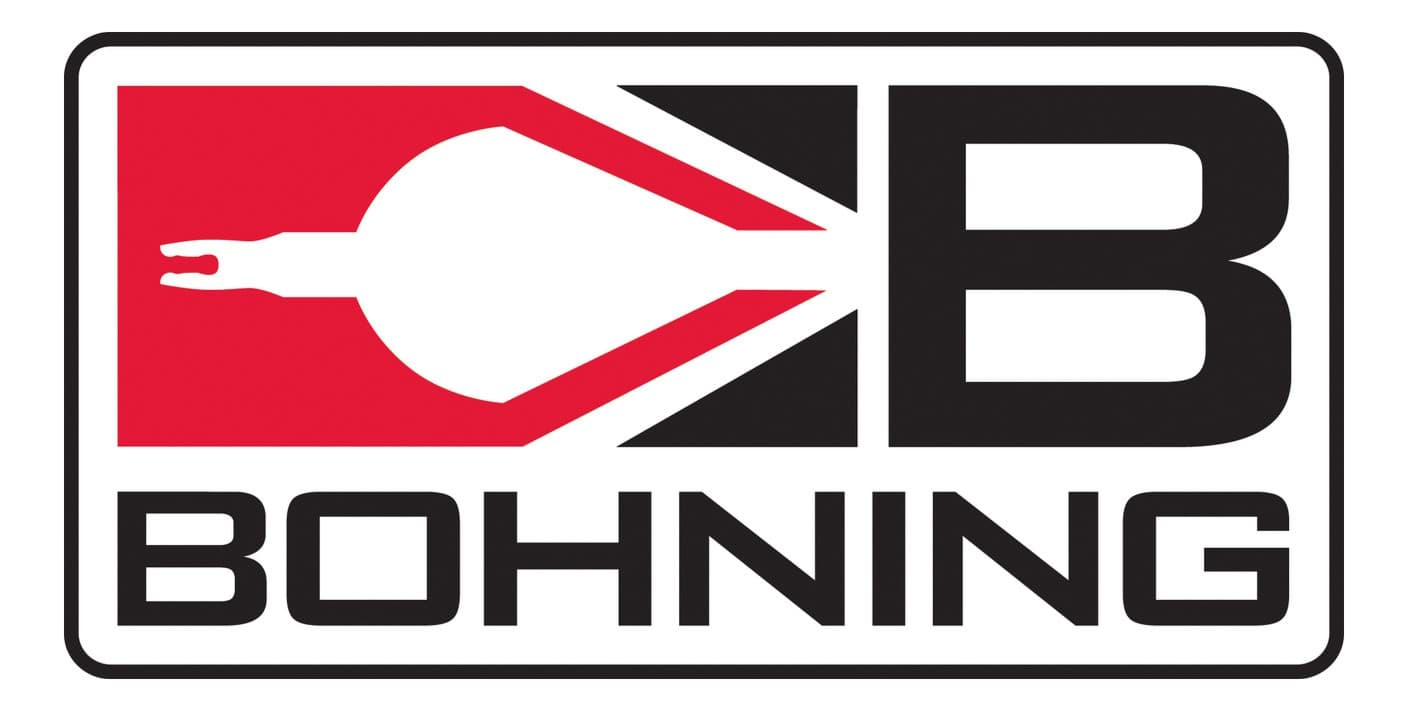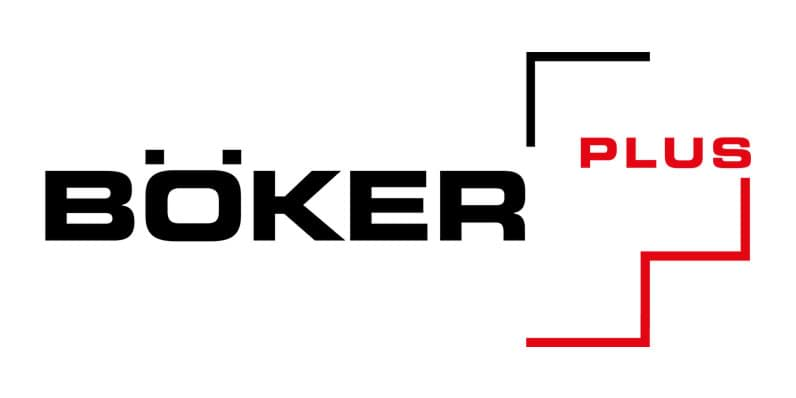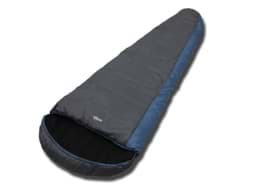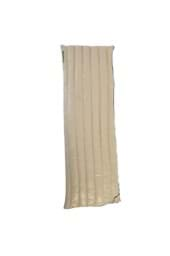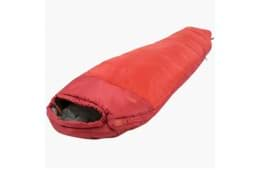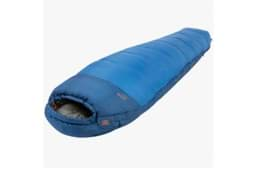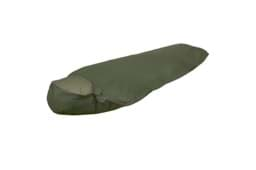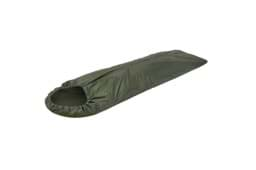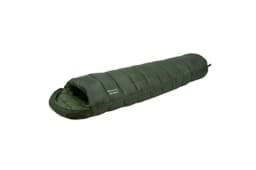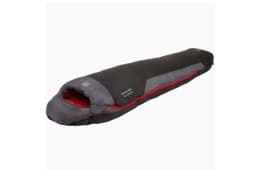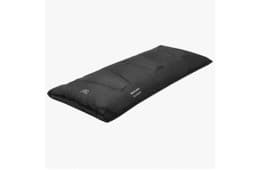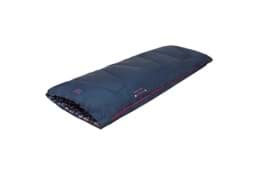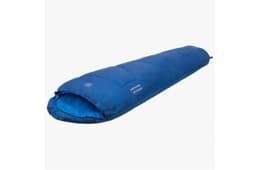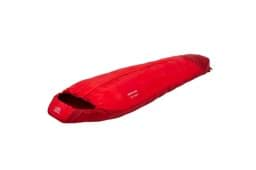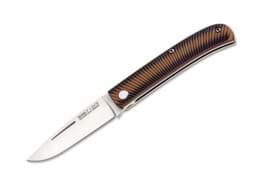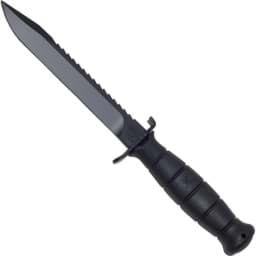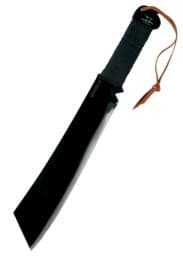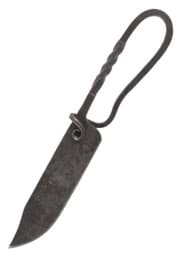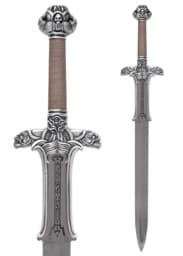Whether on a camping holiday or trekking adventure: A sleeping bag is not just a cover for the night, but a well-thought-out piece of equipment that provides both protection and comfort, ensuring a restful sleep. Since the range of sleeping bags is as diverse as the needs of outdoor enthusiasts, a suitable model can be found for every requirement.
At Meister Messer, you will find the perfect sleeping bag for your next outdoor adventure. Our selection of sleeping bags ranges from ultra-light models for the ambitious mountaineer to cozy options for a relaxing camping trip. The following guide highlights what to consider when purchasing a sleeping bag.
The art of material selection: fillings and fabrics
Choosing the right material is crucial for comfort and functionality when it comes to sleeping bags. The filling significantly influences the insulation properties and the weight of the sleeping bag. Two materials are particularly in focus here:
- Down filling: Down is known for its excellent warmth-to-weight ratio. It compresses well, making the sleeping bag easy to transport. However, down loses its insulating ability when wet and requires longer drying times. Sleeping bags with down filling are suitable, for example, for colder, dry conditions where weight and pack size are crucial.
- Synthetic fibers: Plastic fillings absorb less moisture and provide insulation even when wet. They are easier to care for and often more cost-effective than down, but come with a higher weight and larger pack size. Corresponding models are particularly suitable for humid climates and outdoor activities where durability and moisture resistance are key.
Whether sleeping bags can score well in the test also depends on the outer fabric and the lining. Robust outer materials like ripstop nylon protect against abrasion and light weather influences. Soft and skin-friendly fabrics like polyester or cotton are often used for the lining, ensuring a pleasant sleeping climate.
Some sleeping bags also feature additional coatings or impregnations that make the material water-repellent. This proves to be an invaluable advantage, especially during outdoor activities in humid climates.
Shapes and Cuts: From Mummy to Blanket
The shape of a sleeping bag is not only a matter of personal preference, but also crucial for its thermal performance and comfort. Two main shapes dominate the field:
- The so-called mummy sleeping bags are designed to snugly enclose the body. This minimizes air exchange inside and thereby maximizes thermal performance. The contouring follows the natural body shape, with the area around the feet often tapering narrower to reduce unnecessary volume and efficiently retain heat.
- Rectangular sleeping bags, on the other hand, have a rectangular shape that provides more space inside, allowing for more freedom of movement during sleep. This shape is ideal for those who prefer to toss and turn while sleeping or who want to use the sleeping bag as a blanket when needed.
With egg-shaped sleeping bags, there are also hybrid versions that represent a mixture of both worlds. They offer a certain adaptation to the body shape, but at the same time provide more space in the shoulder and knee area than the classic mummy shape. Corresponding models are particularly popular with users who are looking for a compromise between warmth and comfort.
Another important aspect to consider are sleeping bag hoods. In mummy-shaped models, these are often designed to enclose the head to provide additional warmth. In rectangular sleeping bags, however, they are less common or designed to lie flat and can be used as a pillow base.
The choice of shape and cut should therefore be carefully considered, taking into account individual sleeping habits and planned conditions of use. Whether a close fit for maximum warmth or a generous blanket shape for comfort and flexibility - at Meister Messer, there is a suitable sleeping bag for every preference.
Temperature ranges: Custom warmth
Which sleeping bag is right for you depends primarily on the prevailing temperature conditions. Sleeping bags - whether for children or adults - are divided into different temperature ranges to provide users with guidance on the conditions in which they can enjoy optimal sleeping comfort. This classification is usually based on the European standard system EN 13537, which defines three main temperature specifications:
- Comfort temperature: The temperature at which an average woman can sleep comfortably in a relaxed position without feeling cold.
- Limit temperature: The temperature at which an average man can still sleep without freezing.
- Extreme temperature: The survival temperature a woman can endure without experiencing frostbite. This information is to be understood as an emergency guideline and is not intended for regular use.
What should not go unmentioned in this context: The temperature ratings are guidelines. Individual sensitivity to cold, sleepwear, and the insulation of the sleeping pad also play a role. A well-insulated sleeping surface can significantly enhance the warmth performance of the sleeping bag, for example.
Manufacturers offer sleeping bags for different climate zones and seasons. So there are lightweight summer sleeping bags designed for warm nights, while three-season sleeping bags are suitable for spring, summer, and autumn. For cold winter nights, there are special winter sleeping bags that keep you warm even in sub-zero temperatures.
Whether you're looking for sleeping bags for camping or your next mountain adventure, choosing the right temperature range is crucial for a restful night under the stars. It's important to always plan for a certain margin to be well-prepared even in unexpectedly cold temperatures.
Accessories and Features: Small extras with a big impact
Equipping a sleeping bag with thoughtful accessories and practical features can significantly enhance the sleeping and user experience. It is often the small details that distinguish a good sleeping bag from an excellent one. Here is a look at some of these extras:
A draft collar is an additional insulation layer that runs around the neck area, preventing warm air from escaping and cold air from entering. This feature significantly contributes to the warmth performance and can be found especially in sleeping bags designed for cooler temperatures.
Another useful detail is the anti-jam strip on the zipper. It ensures that the fabric does not get caught in the zipper, avoiding not only annoying damage but also making it easier to open and close the sleeping bag.
Some sleeping bags for adults and children offer integrated pockets that serve as a secure storage space for valuables or small items. These are often located inside and easily accessible, allowing you to easily access the items stored there even in a half-asleep state.
The so-called hood adjustment also increases comfort. With a drawstring, the hood can be tightened to retain warmth around the head and adjust the fit individually.
Some models feature zippers on both sides, which not only makes entry and exit easier, but also allows for better ventilation as the sleeping bag can be partially opened.
The connection of sleeping bags is a feature that is particularly popular among couples or friends traveling together. By using corresponding zippers, two sleeping bags can be connected to form a double bed.
The mentioned features and accessories are examples of how manufacturers respond to the needs of outdoor enthusiasts to enhance their experience in nature. So, it's worth paying attention to these details when buying a sleeping bag to choose the best possible gear for the next adventure.
Buy sleeping bags: The most important buying criteria at a glance
Choosing the perfect sleeping bag is a personal decision that depends on various factors. To make your decision a little easier, you should consider the following aspects:
- A central question is in which season and in which climate you will primarily use the sleeping bag. The conditions determine whether you need a lightweight summer sleeping bag, a versatile three-season sleeping bag, or a sturdy winter sleeping bag.
- Also consider your personal sleeping habits. If you move a lot at night, a rectangular sleeping bag might be the better choice. For cold environments or if you tend to get cold quickly, a mummy model with good insulation is recommended.
- The weight and pack size are particularly important for backpackers and hikers. Down-filled sleeping bags are a good choice here, as they are lightweight and can be compressed well.
- The size of the sleeping bag should match your body size. An oversized sleeping bag can create unnecessary cold spots, while one that is too small may compromise comfort and insulation.
- Also consider the care. If you are often on the go and do not have the opportunity to wash the sleeping bag regularly, a model with synthetic filling may be more practical as it is easier to care for.
- And finally, you should keep an eye on your budget. There are sleeping bags available in different price ranges, and often the price reflects the quality of materials and features.
Care and Storage: Ensure Longevity
By properly caring for and storing your sleeping bag, you not only maintain its performance. The appropriate care also contributes to a longer lifespan. Here are some basic care tips:
- Sleeping bags should be aired and dried after each use. Moisture - whether from condensation or sweat - can affect the insulation ability and should not be underestimated. Hang the sleeping bag in a dry, shady area after use to ensure it dries completely.
- When cleaning, you should follow the manufacturer's care instructions. Many sleeping bags can be cleaned in the washing machine. However, it is often advisable to use special detergents for down or synthetic fillings and to avoid fabric softener. Hand washing can be a gentle alternative, especially for down sleeping bags.
- For storage between tours, it is recommended not to leave the sleeping bag compressed. Instead, store it either hanging up or in a large, breathable transport sack. This prevents the filling from being permanently compressed and losing its insulating ability.
- In addition, you should avoid exposing the sleeping bag to direct sunlight or storing it in damp areas, as UV radiation can damage the material and moisture can lead to mold formation. A dry, cool place is ideal for storing your sleeping bag.
With the help of these care and storage instructions, you can ensure the functionality and comfort of your sleeping bag for many years to come. Careful handling is the key to always benefit from its full performance.
Buy high-quality sleeping bags cheaply at Meister Messer
At Meister Messer Online Shop, you can find high-quality sleeping bags in numerous designs. Our range includes both mummy and rectangular sleeping bags, as well as egg-shaped sleeping bags, ranging from lightweight summer sleeping bags to three-season sleeping bags and even thermal sleeping bags designed for sub-zero temperatures – Therefore, explore our range directly and find the sleeping bag on Meister Messer that will make your nights under the stars an unforgettable experience.

